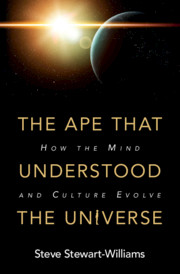Book contents
- The Ape that Understood the Universe
- Advance Praise for The Ape that Understood the Universe
- The Ape that Understood the Universe
- Copyright page
- Dedication
- Contents
- Acknowledgments
- 1 The Alien’s Challenge
- 2 Darwin Comes to Mind
- 3 The SeXX/XY Animal*
- 4 The Dating, Mating, Baby-Making Animal
- 5 The Altruistic Animal
- 6 The Cultural Animal
- Book part
- Permissions
- Notes
- References
- Index
5 - The Altruistic Animal
Published online by Cambridge University Press: 13 September 2018
- The Ape that Understood the Universe
- Advance Praise for The Ape that Understood the Universe
- The Ape that Understood the Universe
- Copyright page
- Dedication
- Contents
- Acknowledgments
- 1 The Alien’s Challenge
- 2 Darwin Comes to Mind
- 3 The SeXX/XY Animal*
- 4 The Dating, Mating, Baby-Making Animal
- 5 The Altruistic Animal
- 6 The Cultural Animal
- Book part
- Permissions
- Notes
- References
- Index
Summary
- Type
- Chapter
- Information
- The Ape that Understood the UniverseHow the Mind and Culture Evolve, pp. 174 - 218Publisher: Cambridge University PressPrint publication year: 2018



